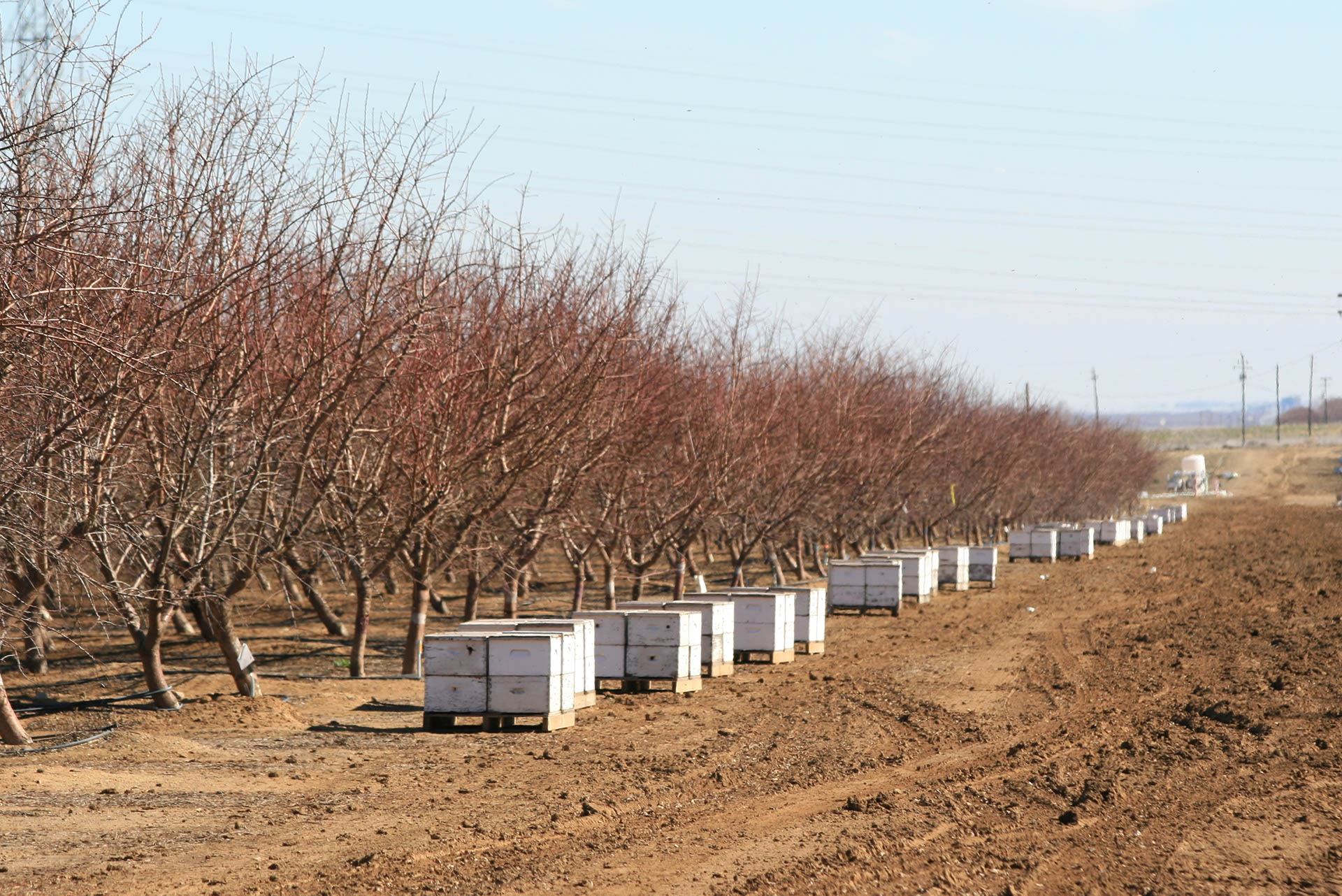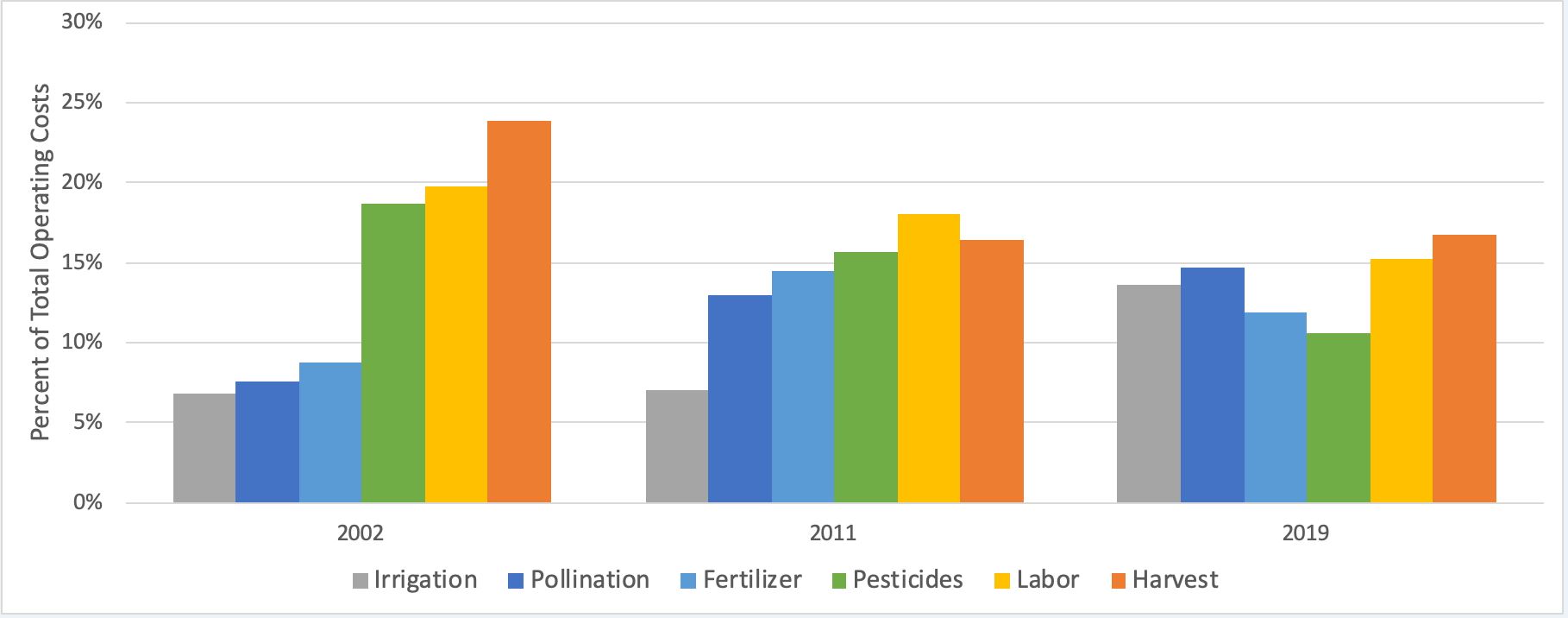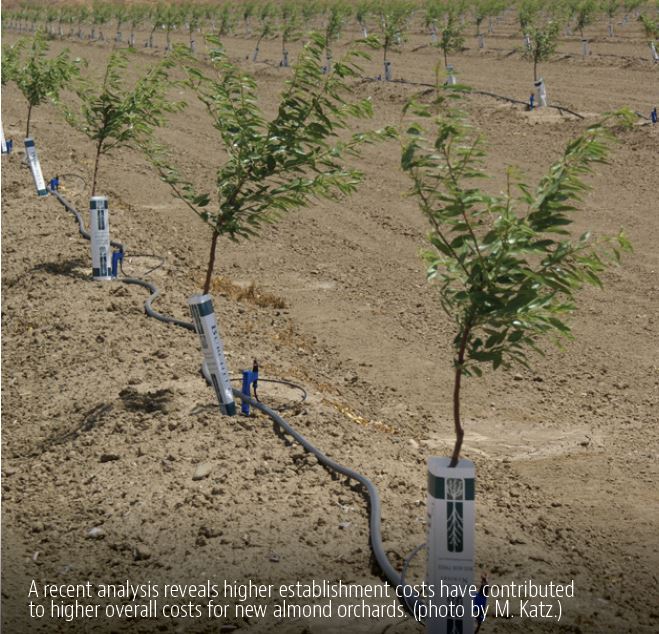
A review of almond cost studies over the last two decades reveals that costs to establish and maintain an orchard have increased significantly in the last three years. While costs had remained steady between 1998 and 2016, the overall costs for establishing and producing an acre of almonds in California went up significantly between 2016 and 2019.
UC Davis Economist Brittney Goodrich also noted significant shifts in operating costs for almond growers in recent years in six major categories: irrigation, pollination, pesticides, labor, fertilizer and harvest.
Goodrich analyzed annual cost studies by the UC’s Agriculture Issues Center for the Northern San Joaquin Valley between 1998 and 2019 to get a sense of how and where almond growers are spending their money when establishing and maintaining an almond orchard. These numbers are based on assumptions and may not represent exactly what’s happening for a specific grower or orchard, but they display the general trend in almond costs.
“One of the key takeaways is that costs from 1998 through 2016, adjusted for inflation, are fairly steady until you get into the transition from 2016 to 2019 where costs have increased quite a bit,” Goodrich said. “Just looking at operating costs, they were around $2,400 per acre in 2016 and in 2019 they were at $2,700 per acre, so between 2016 and 2019 there has been a $300 per acre increase in operating costs.”
Total costs, including land and establishment costs hovered at around $4,500 per acre between 1998 and 2016, and then experienced a sharp incline to more than $5,700 in the last three years. At the same time, average base prices for inshell almonds have leveled off as global demand has softened for California almonds, and this dynamic is likely eating into growers’ net returns.
“Some of the increased cost is due to land values increasing and some is due to increased costs for bees, water and fertilizer.”
The costs of pollination, irrigation and fertilizer all figure more heavily as a percentage of overall costs in a micro-irrigated bearing almond orchard, while pesticides, labor and harvest costs have comprised a smaller percentage in the last seven years. In 2002, pesticides, labor and harvest made up more than 60 percent of total operating costs, while irrigation, pollination and fertilizer each made up less than 10 percent of total production costs. By 2019, pesticides, labor and harvest had dropped to 43 percent of overall operating costs, while irrigation, pollination and fertilizer jumped to as much as 45 percent of operating costs. Pollination for traditional, cross pollinating varieties has gone up, for instance, as per-hive costs have soared from $40 per hive in 2000 to about $200 per hive or more.

While this will come as no surprise to growers, more surprising, perhaps, is the effect that rising land prices and interest rates have had on overall costs over the last three years. Between 2016 and 2019, Goodrich reported, the assumed interest rates jumped from 3.25 percent to 6 percent and average irrigated land values increased an average of 8 percent. She noted that growers should consider the opportunity costs of farming the land, versus leasing it or selling to reinvest, as part of the cost analysis of doing business.
Higher establishment costs, including ripping out old orchards, chipping and shredding, planting and purchasing new trees, have also increased. Shifts in production practices were part of this dynamic: chipping and shredding orchards, for instance, is a more expensive alternative to burning.

“With the cost of production increasing over the last decade or so and the relatively low almond prices right now, net returns from almond production have likely narrowed for many almond producers,” Goodrich said.
Still, she noted, new almond orchards continue to be planted, suggesting that almonds remain a profitable crop of choice compared to other options in California’s Central Valley.

Marni Katz
Marni Katz has lived and raised her family in the San Joaquin Valley for nearly 30 years. In that time, she has covered agriculture for a number of leading ag publications and organizations and gained a reputation for understanding and digesting complex information and presenting it to growers. She enjoys learning about new ways growers can farm more profitably and efficiently, and working with researchers and stakeholders to bring that information to the growing community. In her free time, Marni plays saxophone with jazz groups throughout the Valley and is an avid tennis nut.















